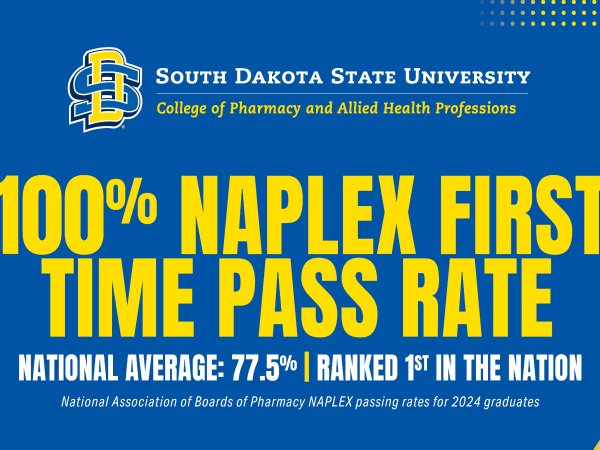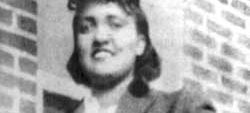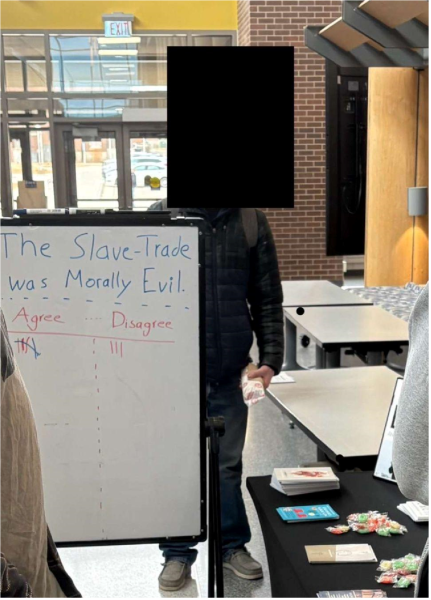Origin of immortal cells brought to light through campus viewing
March 13, 2019
A young African American woman named Henrietta Lacks went to a hospital in August 1951 and died a few months later. Now, her immortal cells are used in laboratories all around the world, including one here at South Dakota State.
The Black Student Alliance, the Office of Multicultural Affairs, the Feminist Equality Movement and Weekend Stuff sponsored a screening of “The Immortal Life of Henrietta Lacks” on Feb. 28 night. The film from HBO depicts the Lacks family’s search for information on their family member.
Lacks’ doctor diagnosed her with cervical cancer after she went to the Johns Hopkins Hospital in Baltimore. Some cells were taken from her during a biopsy and, without her consent, were cultured by George Otto Gey.
Gey soon discovered that, unlike other human cell cultures, Lacks’ cells were functionally immortal under the right conditions. Lacks’ cells became the first immortal line of human cells and were named “HeLa.”
“In the beginning, it was hard to keep [human] cells alive and you spent a lot of time trying to keep them alive instead of researching,” said Jaime Lopez, an assistant professor of biology and microbiology. “That barrier was broken with HeLa cells because they basically grow on their own.”
Since then, Lacks’ cells have been used to develop numerous drugs, including the polio vaccine, and have been used to research diseases like cancer and HIV. Lopez, who specializes in cell biology, is currently using them to investigate DNA-protein crosslinks, the enzymes that fix them and if these enzymes make certain cancers resistant to chemotherapy.
“Not only was the tissue living and taken without consent, but there was a career and financial benefit researchers got,” said Greg Peterson, a professor of philosophy and religion.
Lacks and her family never received compensation for the use of her cells.
Greg Peterson is currently teaching SDSU’s bioethics course. He said there are now institutions in place to protect patients from having their cells used without their consent. Currently, there are some legal precedents that allow the nonconsensual use of someone’s cells.
“But there’s a wide consensus [within the medical community] that this shouldn’t happen without consent,” Peterson said. “Useful biological material goes through a board of review to get consent. Not that this never happens, but institutions are in place most places to prevent it.”
Beyond the informed consent issues, HeLa cells are controversial because there is a long history of medical exploitation of African Americans in the United States.
From James Marion Sims, often called the “the father of modern gynecology,” experimenting on enslaved black women without anesthesia, to the U.S. Public Health Service’s Tuskegee study where black men with syphilis were deprived of treatment, the United States has a complex history with race and medicine.
Johns Hopkins Hospital was the only hospital in the Baltimore area that treated black patients, and when Lacks experienced consistent abdominal pain and vaginal bleeding, it was the only place she could go for treatment.
“In medicine during that time, consent issues were not recognized in the same way [as they are today],” Peterson said. “It could have happened to a white woman or man, but being an African American woman did not help. Consent would not [be] viewed as a big deal because of the subject.”
Regan Stone, a first-year interior design major, has conflicting feelings on the HeLa cells after she learned about them from the movie “The Immortal Life of Henrietta Lacks.”
“When I first saw [the movie], I was super appalled that they didn’t feel the need to ask her for her cells,” Stone said. “But they’ve benefited the medical field a lot.”
Despite the ethical questions, Lopez thinks it’s important to remember Lacks both as a person and as a case study about informed consent.
“If we stopped using those cells people will forget about Henrietta Lacks,” Lopez said. “Keeping the cells in cultures forces us to have that ethical conversation. At least for my students who come into my lab, if they don’t know about Henrietta Lacks, it’s a great time to tell them.”






















